Why the Price for Silver Per Ounce Matters Right Now
The price for silver per ounce is a critical metric for investors, reflecting a unique position in the financial world. Unlike gold, which is primarily an investment, silver serves a dual duty: it's both a store of wealth and a vital industrial commodity. This means its price reflects global demand from investors seeking inflation protection and manufacturers building everything from smartphones to solar arrays.
Silver's recent rally to 10-year highs isn't random. It's driven by a convergence of global supply constraints, robust industrial demand (especially from the green revolution), and persistent economic uncertainty. However, the price you see on screen—the "spot price"—is just the starting point. When you buy physical silver like coins or bars, you'll pay a premium that covers minting, distribution, and dealer costs. Understanding this difference between the paper price and the real cost of tangible metal is crucial for any serious investor.
This guide cuts through the complexity to give you the real-time data, historical context, and practical knowledge you need to make confident decisions about silver.
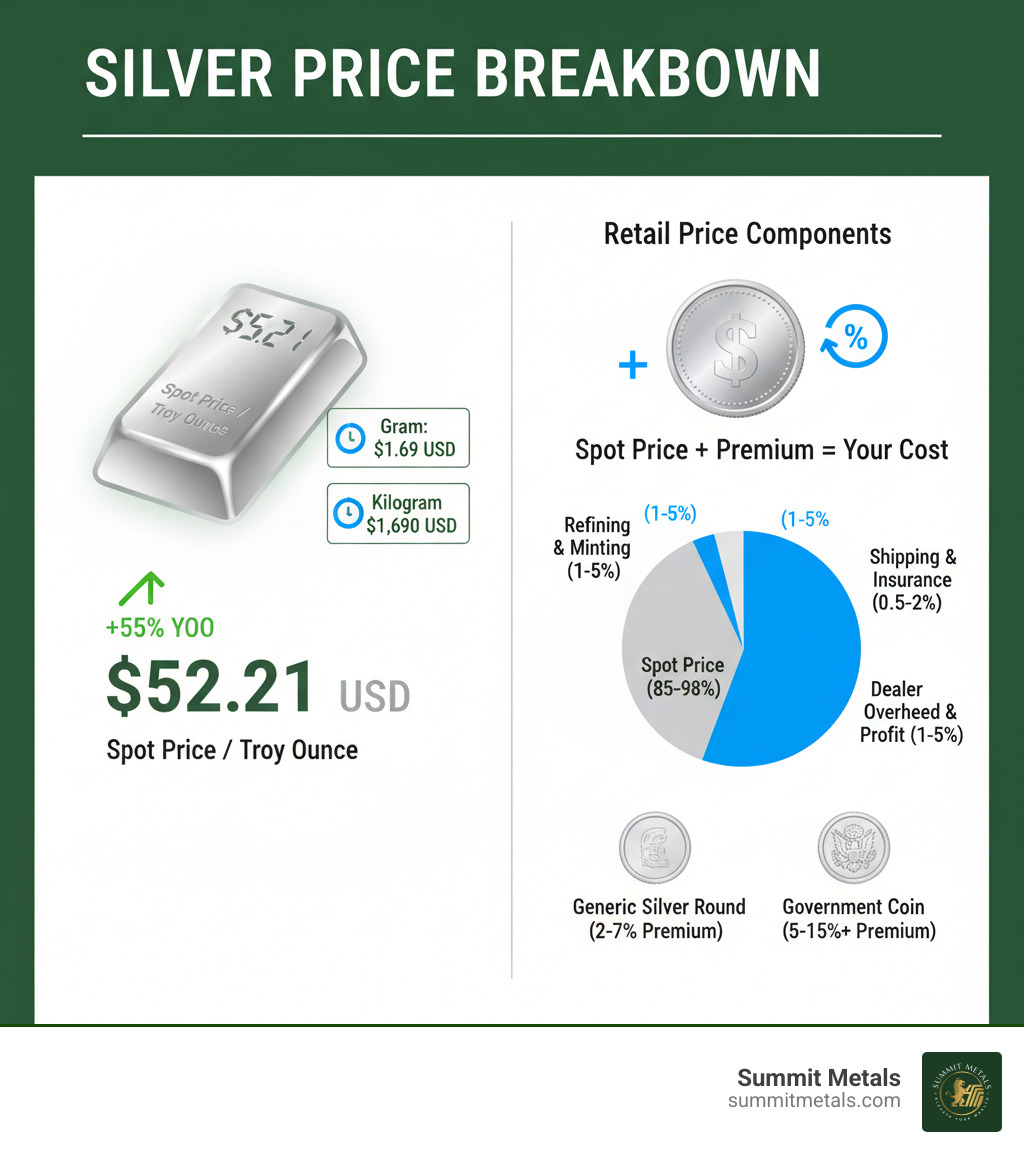
Infographic showing how the retail price of a 1 oz silver coin is the spot price plus a premium. This premium covers refining, minting, shipping, and dealer costs.
Live Silver Price Data
When we talk about the price for silver per ounce, we're typically referring to the spot price—the current market price for immediate delivery. This price is in a constant state of flux, changing minute-by-minute during global trading hours. It's the benchmark that all other silver products are priced against.
As of this publication, here's a snapshot of live silver price data:
- Price per Ounce: Approximately $51.86 - $52.57 USD
- Price per Gram: Approximately $1.67 - $1.71 USD
- Price per Kilo: Approximately $1,667 - $1,713 USD
- 24-Hour Change: We've seen a modest retreat from this week's record highs, but the overall trend remains strong.
These figures are derived from the most actively traded near-term futures contracts on major commodity exchanges like the COMEX. They reflect the real-time balance of global supply, demand, and investor sentiment.
Understanding the Current Price for Silver Per Ounce
Silver's price doesn't sit still. It pulses with the rhythm of global markets, reacting to everything from factory orders in China to interest rate whispers from the Federal Reserve. This section gives you the tools to read that heartbeat and understand what it's telling you.
Today's Silver Price Movements
The silver market never sleeps, with trading happening around the clock across global exchanges. This means the price for silver per ounce is constantly evolving. Recently, silver has shown significant upward momentum, climbing steadily over the past month and surging impressively over the last year. This strong performance has pushed silver to heights not seen in a decade, catching the attention of both industrial buyers and investors.
These movements aren't random fluctuations; they are signals reflecting increased industrial consumption, investors seeking shelter from inflation, or supply constraints making each ounce more valuable. For those who enjoy technical details, you can watch these movements unfold in real-time with interactive charting tools.
View the live chart on TradingView
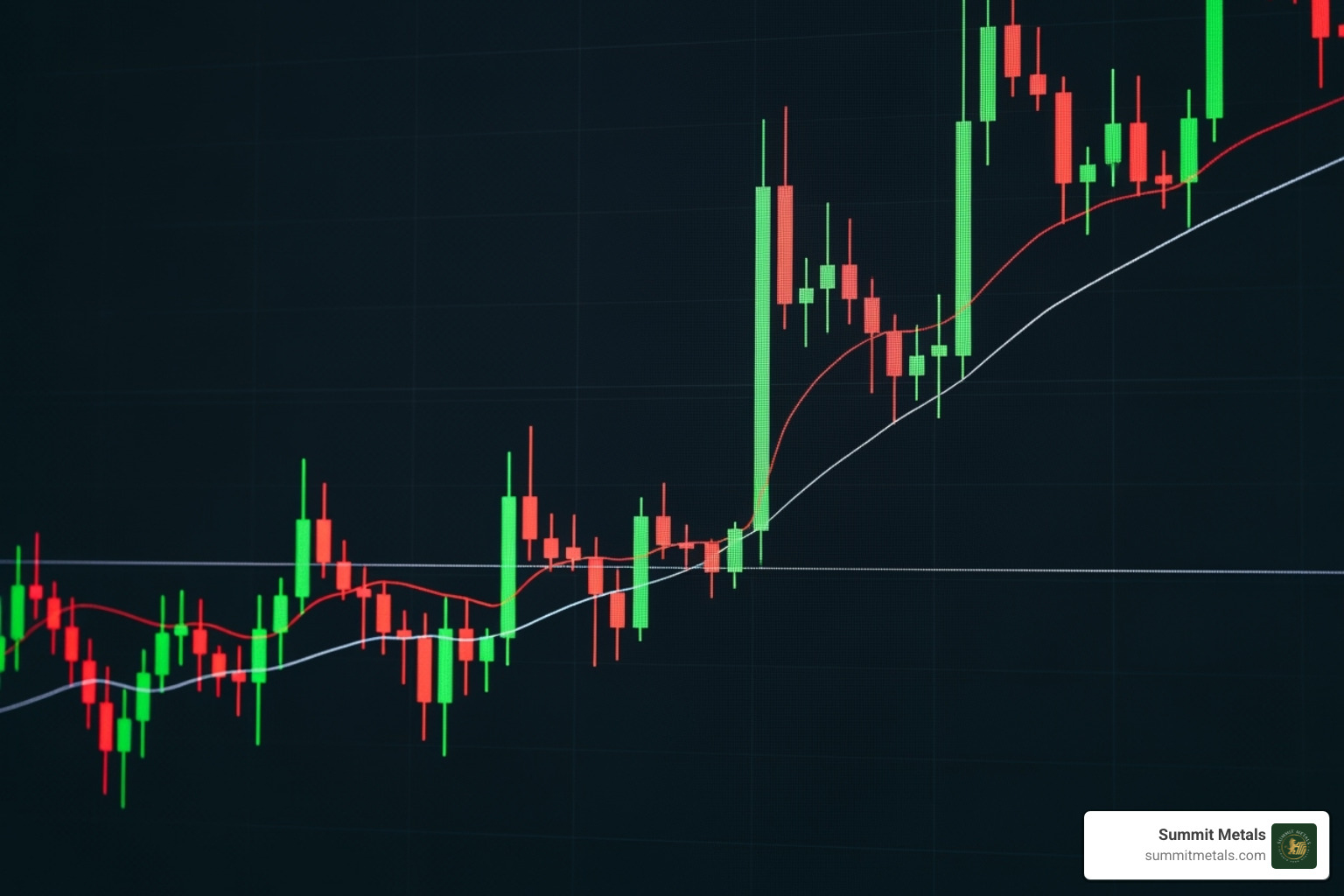
Key Pricing Terminology
To understand the price for silver per ounce, you need to speak the language. Knowing these terms will help you make smarter decisions.
- Spot Price: The current market price for one ounce of raw silver for immediate delivery. It's the baseline cost of the metal itself, changing constantly during trading hours.
- Bid Price: The price a dealer is willing to pay to buy silver from you. It's always slightly below the spot price.
- Ask Price: The price a dealer is willing to sell silver for. It's always slightly above the spot price.
- Spread: The difference between the bid and ask prices. This is how dealers cover costs and make a profit.
- Premium: The amount you pay above the spot price for a physical silver product like a coin or bar. The premium covers costs like refining, minting, shipping, and dealer overhead. It's why you can't buy a physical coin for the exact spot price.
Understanding premiums is crucial for getting the best value, as they differ between products. For example, a government-minted coin typically has a higher premium than a generic silver round.
Why a Troy Ounce Matters
Here's a key fact for new investors: the price for silver per ounce refers to a troy ounce, not the standard "avoirdupois" ounce used in everyday life (like for groceries).
A troy ounce weighs 31.1035 grams, which is about 10% heavier than a standard ounce (28.35 grams). This system originated in medieval France as a standard for weighing precious metals and is still used globally for gold, silver, and platinum.
This distinction is critical. Because the entire precious metals industry uses troy ounces, you can be sure you're comparing apples to apples when looking at prices. That 10% difference adds up quickly when you're building an investment, so know you're buying based on the correct, standardized weight.
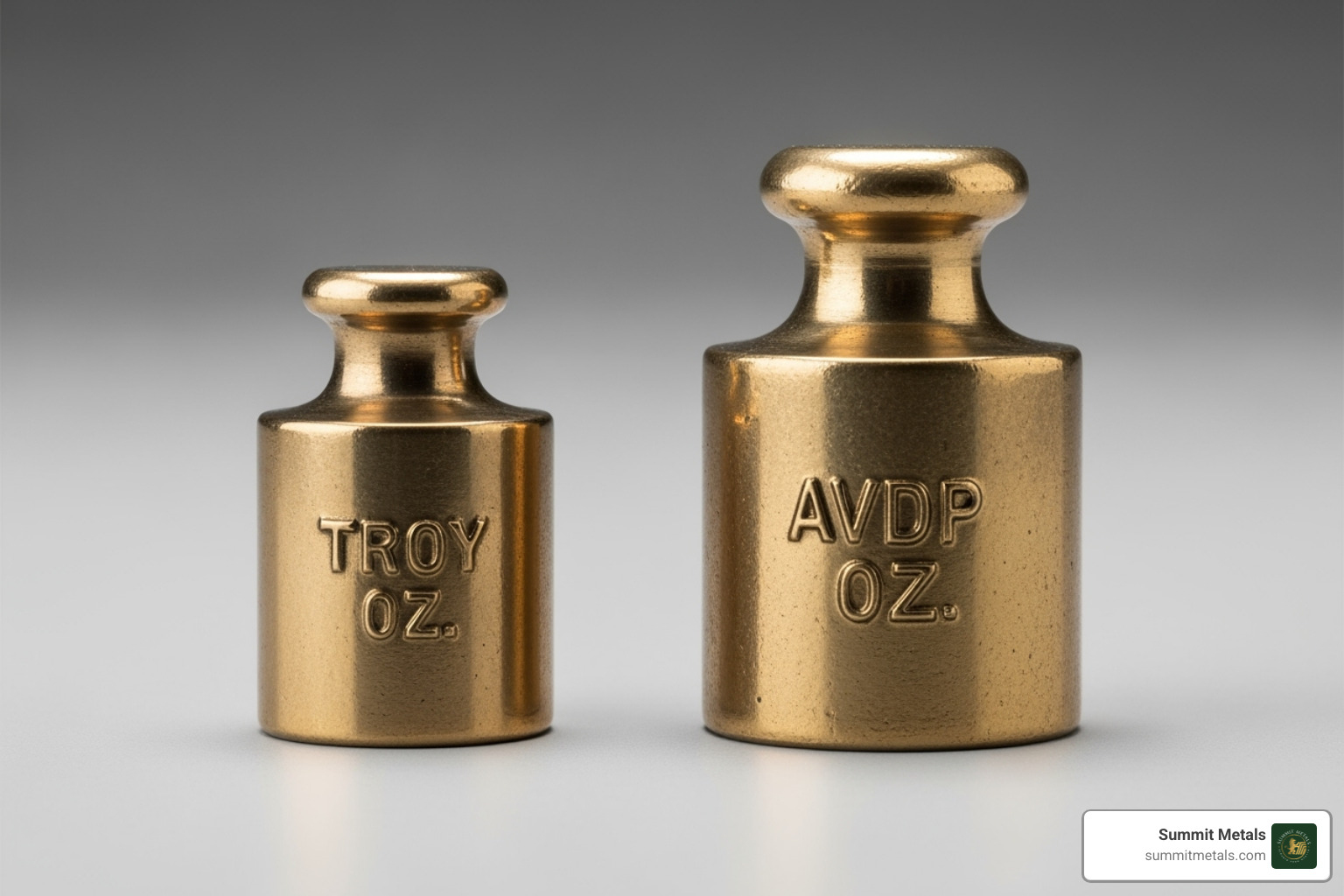
What Drives the Price of Silver Per Ounce?
Silver's unique dual role as an industrial metal and a precious metal means its price is influenced by a wide range of factors.
The Impact of Industrial Demand
Here's where silver truly separates itself from gold: it's a workhorse. Industrial demand is a massive force behind the price for silver per ounce, and it's growing fast.
The Green Revolution is a primary driver. Every solar panel contains silver due to its best electrical conductivity. As the world transitions to renewable energy, the demand for silver in photovoltaics is surging. Similarly, electric vehicles (EVs) use roughly double the silver of a traditional car. With EV sales accelerating globally, this demand is set to climb even higher.
Beyond the green economy, silver is essential to our connected world. It's in your laptop, smartphone, and the 5G network infrastructure. Its antimicrobial properties also make it valuable in medicine and water purification. This broad industrial footprint means that global economic growth and technological advancement often translate directly into a higher price for silver per ounce. For a broader understanding of how various factors influence precious metals, take a look at: Why Gold and Silver Prices Fluctuate.
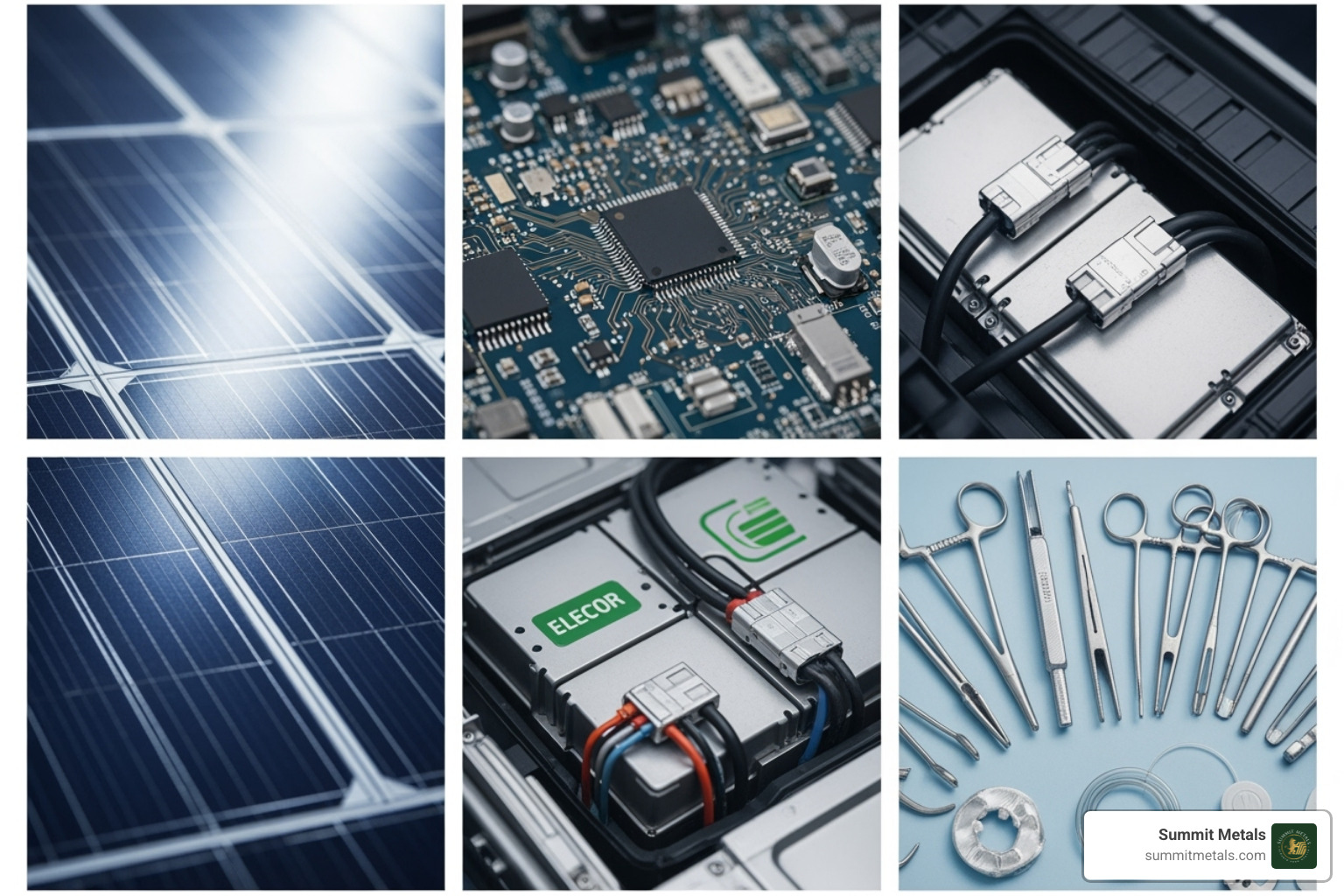
Investment Demand and Economic Factors
Beyond its industrial uses, silver plays a starring role in investors' portfolios, particularly when the economic weather gets stormy. The price for silver per ounce responds dramatically to global economic sentiment.
- Safe-Haven Asset: During market uncertainty, investors flock to silver as a reliable store of value that tends to hold its purchasing power when stocks and bonds stumble.
- Inflation Hedge: As currencies lose value, tangible assets like silver often perform well. It's a time-tested strategy to protect wealth from currency erosion.
- U.S. Dollar & Interest Rates: A weaker U.S. dollar makes silver cheaper for foreign buyers, often boosting its price. Conversely, lower interest rates make non-yielding assets like silver more attractive compared to bonds.
- Geopolitical Instability: Global crises consistently trigger a flight to safety, increasing demand for both silver and gold.
Understanding these dynamics is crucial for anyone looking to protect and grow their wealth through precious metals. For more on navigating such economic landscapes, explore: Maximizing Your Investment in a Chaotic Global Economy.
Supply, Mining, and Production
No matter how strong the demand, the price for silver per ounce ultimately depends on how much is available. The supply side of the equation is where geology, economics, and logistics collide.
Mine output forms the backbone of silver supply, but it's a complex process sensitive to geopolitics, labor issues, and declining yields from aging mines. For several years, silver production has not met demand, creating a structural deficit that puts upward pressure on prices.
Recycling also plays a significant role, with a substantial portion of supply coming from reclaimed industrial scrap and electronic waste. Finally, the cost of production sets a natural floor under silver prices. If prices fall below the cost to mine it, production slows, tightening supply and eventually pushing prices back up.
This widening gap between a relatively flat supply and climbing demand creates a compelling fundamental case for higher silver prices. To learn more about the finite nature of precious metals, visit: How Much Gold & Silver Is There?.
A Practical Guide to Investing in Silver Ounces
From understanding costs to choosing the right product, here’s how to turn your knowledge into a tangible investment.
Spot Price vs. Physical Silver: Understanding Premiums
As any seasoned investor knows, you cannot buy physical silver at the exact spot price. The difference between the spot price for silver per ounce and what you actually pay is the premium. This premium isn't an arbitrary fee; it covers the essential costs of changing raw silver into a finished, investment-grade product:
- Fabrication & Minting: The energy, labor, and machinery to create coins or bars.
- Refining: Purifying silver to .999+ fineness.
- Logistics: Secure, insured shipping and storage.
- Dealer Costs: Operational expenses for reputable dealers to provide authenticated products and real-time pricing.
Premiums vary based on product type (coins vs. bars), size (larger bars often have lower per-ounce premiums), and market conditions. Understanding this is key to evaluating the true cost of your investment. For a deeper dive, check out: The Price of Shine: Understanding Your Bullion's Premium.
Choosing Your Silver: Bars vs. Coins
Should you buy bars or coins? Both have merits, and the best choice depends on your goals. Here’s a comparison of two popular 1 oz options.
| Feature | 1 oz Silver Bars | 1 oz Silver Coins (e.g., American Silver Eagle) |
|---|---|---|
| Premium Cost | Generally lower, maximizing silver content per dollar. | Generally higher due to minting costs and government backing. |
| Liquidity | Very liquid and easy to sell to dealers. | Extremely liquid and universally recognized. Government backing ensures authenticity and ease of resale, making them ideal for barter in extreme scenarios. |
| Storability | Compact and efficiently stackable for secure storage. | Less compact due to their round shape and protective packaging. |
| Government Guarantee | Produced by private refiners with a purity guarantee. | Issued by sovereign mints (e.g., U.S. Mint) and backed by a government for weight and purity. They also carry a nominal face value, which adds a layer of legal tender status and helps protect against counterfeiting. |
| Numismatic Value | None. Value is tied directly to the spot price. | Can develop collector (numismatic) value over time for rare dates or high-grade coins, offering upside potential beyond the silver content. |
For those maximizing the amount of silver for their budget, bars are often the best choice. However, the universal recognition and government guarantee of coins like the American Silver Eagle make them a favorite for many investors.
Explore your options further: Bars vs. Coins: Unpacking the Differences in Silver Investing, American Silver Eagle Coins, and Pure Silver Bars for Sale: Your Guide to Buying Big.
Smart Investing Strategies: Dollar-Cost Averaging
Trying to "time the market" by buying at the absolute bottom is nearly impossible. A smarter approach is Dollar-Cost Averaging (DCA), a disciplined strategy where you invest a fixed amount of money at regular intervals, regardless of the asset's price.
Why DCA is powerful for building your silver stack:
- Reduces Risk: When prices are high, your fixed investment buys fewer ounces. When prices are low, it buys more. This averages out your purchase price over time.
- Removes Emotion: By sticking to a consistent plan, you avoid making impulsive decisions based on market swings.
- Builds Wealth Steadily: DCA is perfect for long-term investors who want to accumulate physical silver gradually without a large upfront investment.
At Summit Metals, we make this easy with our Autoinvest feature. You can set up recurring purchases to automate your silver stacking, just like contributing to a 401k. Let time and consistency work for you.
Set up your automatic silver purchases today and start building your wealth with confidence.
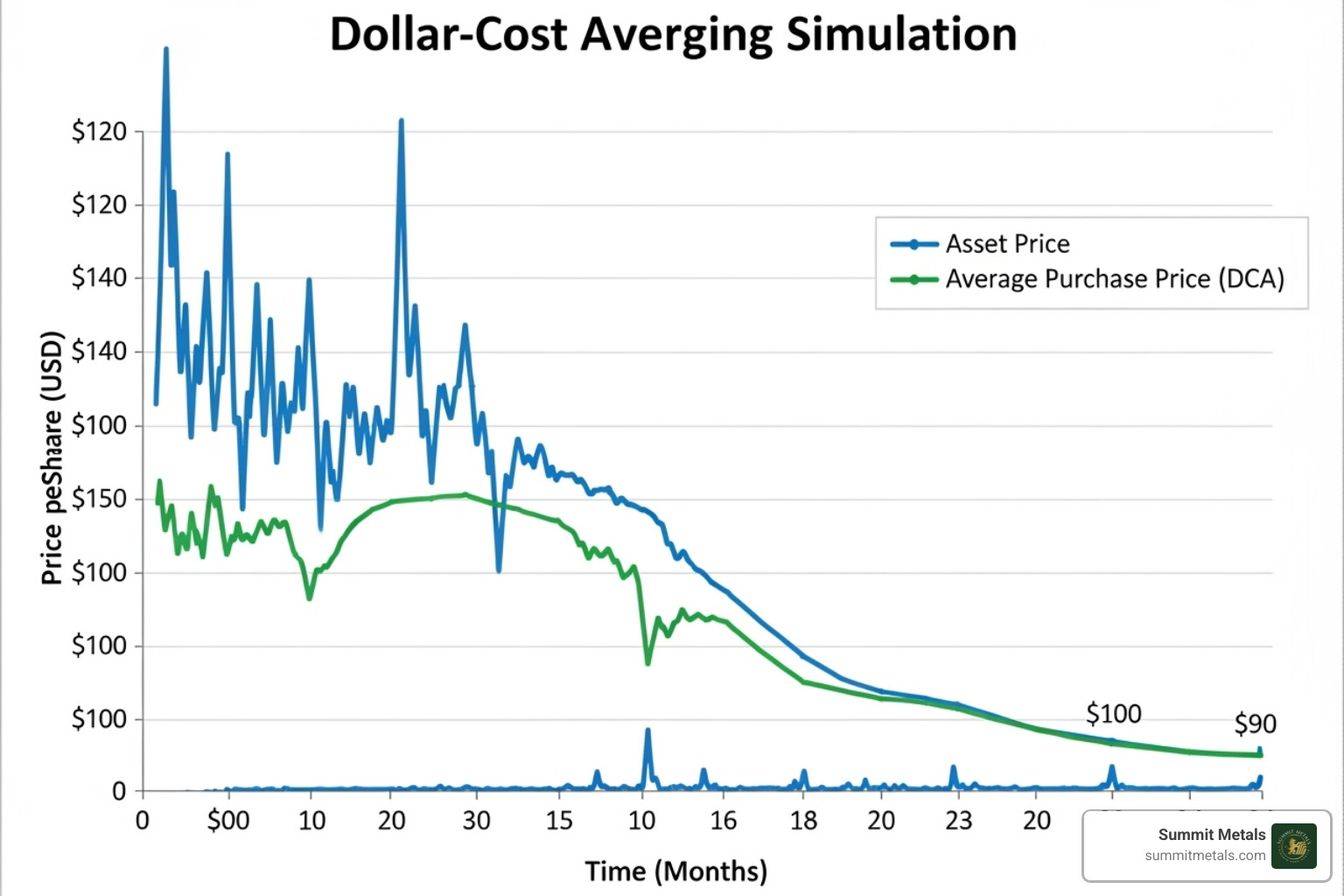
Advanced Analysis and Historical Context
A deeper look at historical trends and analytical tools can provide valuable perspective for serious investors.
The Gold-to-Silver Ratio: A Key Indicator
One of the most powerful tools for a precious metals investor is the Gold-to-Silver Ratio. This metric is calculated by dividing the price of gold by the price for silver per ounce. If gold is $2,000 and silver is $25, the ratio is 80:1, meaning it takes 80 ounces of silver to buy one ounce of gold.
Why does this matter? The ratio has historically fluctuated within recognizable ranges. Savvy investors use these swings to their advantage.
- High Ratio (e.g., above 80:1): Suggests silver is undervalued relative to gold. This could be a good time to buy silver.
- Low Ratio (e.g., below 50:1): Suggests gold may be the better value.
For example, in early 2020, the ratio spiked to over 110:1, signaling that silver was historically cheap compared to gold. An investor who swapped gold for silver at that time could have seen significant gains as the ratio returned to its historical average. This isn't about timing the market perfectly but about understanding the historical relationship between the two metals to make strategic allocation decisions.
The gold-to-silver ratio isn't a crystal ball, but it's a reliable compass for navigating the precious metals market. For a deeper dive, check out: Understanding the Gold-Silver Ratio.
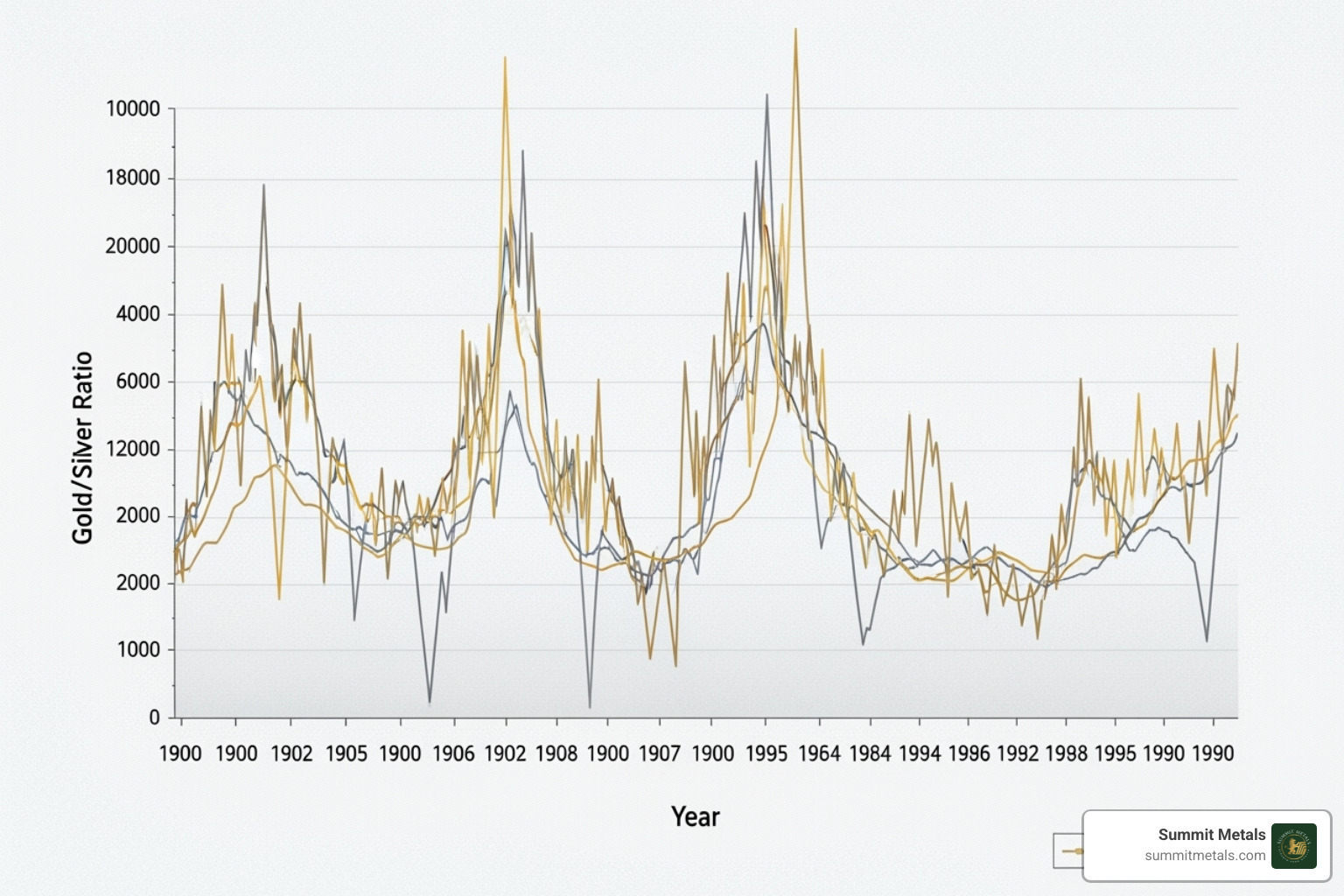
Historical Silver Price Milestones
To understand where the price for silver per ounce might be headed, it helps to know where it's been. Silver's price history is marked by several dramatic events.
- The 1980 Spike: The Hunt Brothers famously attempted to corner the silver market, driving the price to a peak of $49.45 per troy ounce. Adjusted for inflation, that price would be over $180 in today's money, a level silver has not come close to since.
- The 2011 Rally: In the wake of the 2008 financial crisis, fears of currency debasement and surging investment demand pushed silver to nearly $48.70 per troy ounce. This rally was driven by strong fundamentals rather than market manipulation.
- The Current Rally: Today, silver is trading at 10-year highs, driven by a powerful combination of robust industrial demand from the green energy sector and strong safe-haven buying from investors concerned about economic stability.
These milestones show that silver is a dynamic asset that responds to economic pressures, technological shifts, and investor sentiment. When viewed through the lens of inflation, today's prices are still well below historical peaks, suggesting significant potential for growth. For a visual journey through silver's fascinating price history, take a look at: Historical Price of Silver Graph.
Frequently Asked Questions
Let's tackle some of the most common questions we hear from investors exploring the price for silver per ounce.
How is the price for silver per ounce determined?
The spot price is not set by a committee; it's determined by the free market. It emerges from the continuous trading of silver futures contracts on major commodity exchanges like the COMEX. The price reflects the real-time balance of global supply, industrial demand (from sectors like solar and EVs), investment demand, and overall market sentiment. It fluctuates constantly as new information hits the market.
Can I include physical silver in a retirement account (IRA)?
Yes, absolutely. Holding physical silver in a self-directed IRA is a smart way to diversify your retirement portfolio with a tangible asset. The IRS requires the silver to meet a minimum purity of .999 and be held in an IRS-approved depository (not at home). This arrangement allows your investment to grow tax-deferred, just like a traditional IRA, providing a powerful hedge against inflation and market volatility. For a comprehensive guide, see: Learn more about Precious Metals IRAs.
Are there taxes on silver purchases?
It depends on your location and what you do with the silver. Some states impose a sales tax on precious metals purchases, while many others do not, recognizing them as an investment. When you sell silver for a profit, it is subject to capital gains tax. The IRS often classifies precious metals as "collectibles," which can be taxed at a higher rate than stocks. It is crucial to consult with a tax professional to understand the rules in your jurisdiction and for your specific situation.
Conclusion: Is Silver a Good Investment Today?
After reviewing the data and historical context, is silver a good investment today? The price for silver per ounce reflects a powerful convergence of global forces, making it a uniquely compelling asset.
Silver's dual identity as an industrial workhorse and a financial safe haven positions it perfectly for today's world. Industrial demand is surging from the green energy and tech revolutions, while persistent inflation and geopolitical uncertainty drive investors toward hard assets. This isn't speculation; it's fundamental supply and demand.
Understanding the mechanics—from premiums to the gold-to-silver ratio—empowers you to invest with knowledge, not guesswork. Silver's history has repeatedly shown its ability to preserve and grow wealth during turbulent times. While past performance is no guarantee, its proven resilience provides a foundation of confidence.
At Summit Metals, we make this powerful wealth-preservation tool accessible to everyone. Our transparent, real-time pricing and competitive rates ensure you get authenticated products at exceptional value. You don't need to time the market perfectly. With our Autoinvest feature, you can use dollar-cost averaging to build your holdings steadily over time, just like a 401(k).
The question isn't whether silver will fluctuate—all assets do. The question is whether you want exposure to a tangible asset that is essential to modern technology, limited in supply, and historically proven as a store of value. For many savvy investors, the answer is a resounding yes.
Ready to add silver to your portfolio with confidence? Start your precious metals journey with our investment guide and see how Summit Metals makes investing in silver straightforward and secure.



